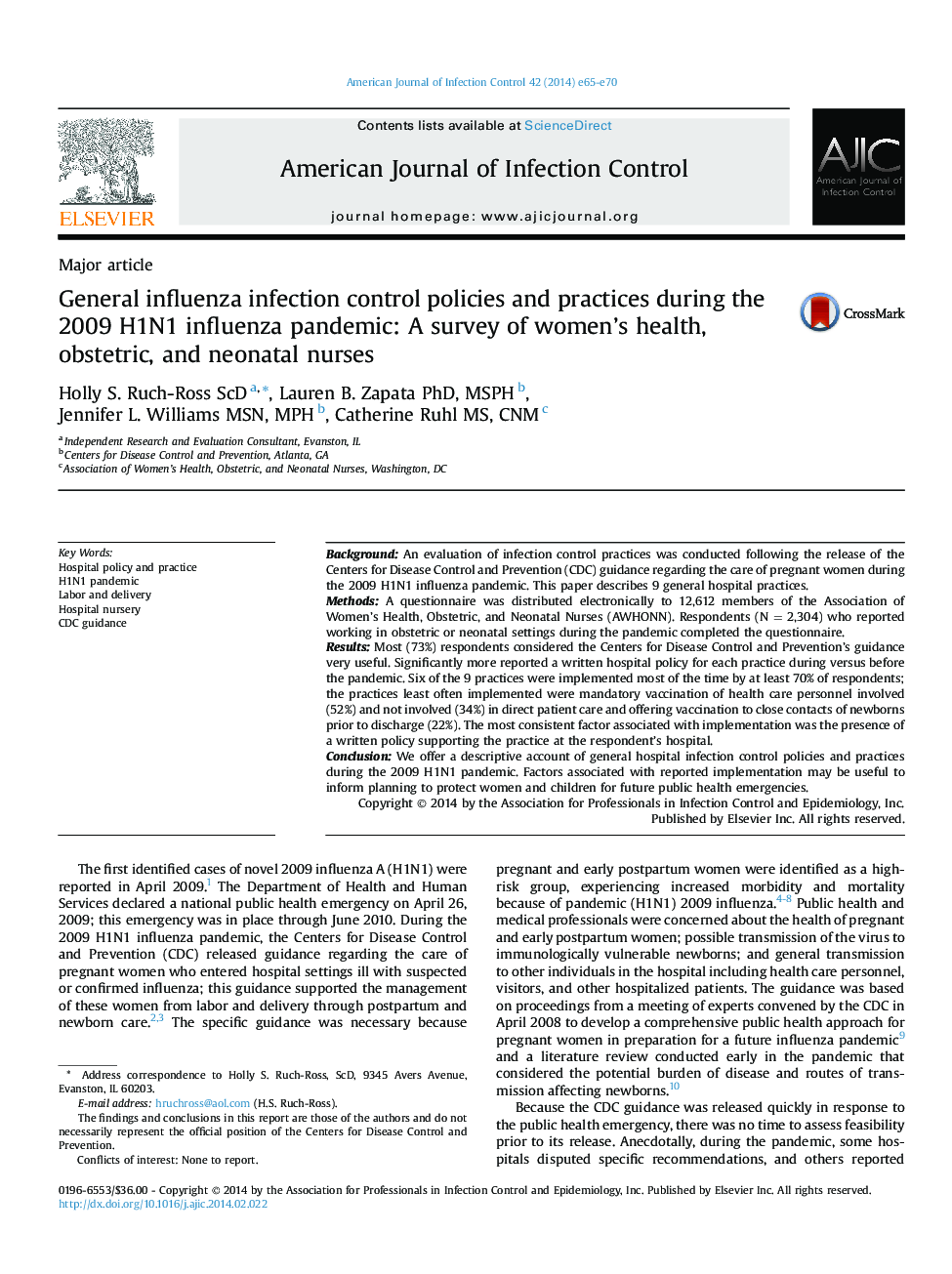| Article ID | Journal | Published Year | Pages | File Type |
|---|---|---|---|---|
| 2638214 | American Journal of Infection Control | 2014 | 6 Pages |
BackgroundAn evaluation of infection control practices was conducted following the release of the Centers for Disease Control and Prevention (CDC) guidance regarding the care of pregnant women during the 2009 H1N1 influenza pandemic. This paper describes 9 general hospital practices.MethodsA questionnaire was distributed electronically to 12,612 members of the Association of Women’s Health, Obstetric, and Neonatal Nurses (AWHONN). Respondents (N = 2,304) who reported working in obstetric or neonatal settings during the pandemic completed the questionnaire.ResultsMost (73%) respondents considered the Centers for Disease Control and Prevention’s guidance very useful. Significantly more reported a written hospital policy for each practice during versus before the pandemic. Six of the 9 practices were implemented most of the time by at least 70% of respondents; the practices least often implemented were mandatory vaccination of health care personnel involved (52%) and not involved (34%) in direct patient care and offering vaccination to close contacts of newborns prior to discharge (22%). The most consistent factor associated with implementation was the presence of a written policy supporting the practice at the respondent’s hospital.ConclusionWe offer a descriptive account of general hospital infection control policies and practices during the 2009 H1N1 pandemic. Factors associated with reported implementation may be useful to inform planning to protect women and children for future public health emergencies.
